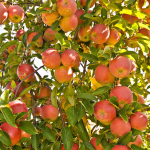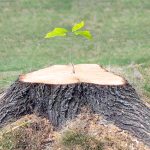Wind Storm Knocks Down Trees Across The Valley: Cause & Effect
The 30-60 mph winds that blasted through the Portland metro area late last month left fallen trees in neighborhoods all over town, many of which were “street trees.” In some neighborhoods, several trees in a row fell like dominoes. Other than the battering winds, is there an explanation for this?
If a tree is uprooting, splitting at the joints, or has already fallen in your yard or on your home, call Inexpensive Tree Care at(503) 504-3724.
Thousands, if not millions, of “street trees” are planted throughout the Portland area (and across the country) with only a few feet to grow between the street and the sidewalk. Street trees have proven to offer urban areas a wealth of benefits from cleaner air and a healthy economy to reduced property crime. But, this itty-bitty living space makes many wonder if it’s really all that healthy for trees, and if they might be more likely to fall than those planted in open areas.
As it turns out, certain circumstances can make this a very legitimate concern. A study conducted by researchers at the University of Minnesota has confirmed that sidewalk construction and repairs make street trees twice as likely to fall when facing high winds.
This study was prompted when more than 3,000 trees fell during the intense storm that blew through Minneapolis in June of 2013. They discovered that the size and species of the trees also played a part in their demise, noting that Linden trees were most likely to topple, followed by ash (which has been a major point of contention for the Ashwood Downs neighborhood in Beaverton), elm and maple trees. And surprisingly, the trees with the largest trunks were the most vulnerable. Where no sidewalk work had been done, the reports said that the average Linden had a 10.6 percent chance of root failure. When the sidewalks had been worked on, that risk of failure rose to 21 percent.
All too often, trees that are planted near sidewalks become too large for the space– their roots turn concrete into a crumbling mess that’s dangerous for pedestrians. Cities are on the hook to repair the sidewalks, so you can be sure they’ve made attempts to prevent this. Many times, when it’s clear that a tree’s roots will destroy nearby pavement, the roots are simply cut and ripped out of the ground.
According to the National Forest Service, cutting a tree’s roots to prevent pavement damage is seldom a sustainable solution. Wounds to a tree in the root area will make it particularly susceptible to insect infestations, disease, and rotting– weakening or even killing the tree.
The same can be said for poor pruning techniques, which are often used by city workers to clear branches from power lines, and can result in an unbalanced, unsafe tree. This combined with the fundamental loss of root structure will have a severe impact of the tree’s ability to stay healthy and upright.
If you’re one of the many homeowners concerned about trees falling in your neighborhood, you may be wondering if there is anything you can do to prevent it. Unfortunately, once damage has been done through bad pruning and sidewalk construction, there’s nothing you can do but petition to have the tree removed.
The U of M’s report calls for cities and forestry departments to coordinate whenever sidewalk construction near street trees is necessary. They suggest re-routing or ramping sidewalks around existing trees rather than cutting into root systems, as well as selecting smaller tree species for planting in these locations.
If a tree is uprooting, splitting at the joints, or has already fallen in your yard or on your home, call Brad at (503) 504-3724. Non-emergency storm tree issues can also be emailed to brad@inexpensivetreecare.com.




